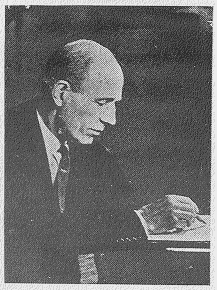| The Viceroy, Lord Irwin, was at this time directing the sternest
repression which Indian nationalism had known, but he did not really relish the role. The
British civil service and the commercial community were in favour of even harsher
measures. But Premier Ramsay MacDonald and Secretary of State Benn were eager for peace,
if they could secure it without weakening the position of the Labour Government; they
wanted to make a success of t6he Round Table Conference and they knew that this body
without the presence of Gandhi and the Congress could not carry much weight. In January
1931, at the closing session of the Round Table Conference, Ramsay MacDonald went so far
as to express the hope that the Congress would be represented at the next session. The
Viceroy took the hint and promptly ordered the unconditional release of Gandhi and all
members of the Congress Working Committee. To this gesture Gandhi responded by agreeing to
meet the Viceroy. "The Two Mahatmas" –as Sarojini Naidu described Gandhi and Irwin—had eight meetings which lasted for a total of 24 hours. Gandhi was impressed by Irwin’s sincerity. The terms of the "Gandhi-Irwin Pact" fell manifestly short of those which Gandhi had prescribed as the minimum for a truce. Some of his colleagues considered the Gandhi-Irwin Pact a clever manoeuvre, and Suspected that Irwin had led the Mahatma upon the garden path of the Viceroy’s House.
On the other hand, it is fair to record that British officials in India, and Tory politicians in England, were outraged by the idea of a pact with a party whose avowed purpose was the destruction of the British Raj. Winston Churchill publicly expressed his disgust "at the nauseating and humiliating spectacle of this one-time Inner Temple lawyer, now seditious faqir, striding half-naked up the steps of the Viceroy’s palace, there to negotiate and parley on equal terms with the representative of the King Emperor". Gandhi’s motives in concluding a pact with the Viceroy can be best understood in terms of his technique. The Satyagraha movements were commonly described as "struggles", "rebellions" and "wars without violence". Owing, however, to the common connotation of these words, they seemed to lay a disproportionate emphasis on the negative aspect of the movements, namely, opposition and conflict. The object of Satyagraha was, however, not to achieve the physical elimination or moral breakdown of an adversary, but, through suffering at his hands, to initiate those psychological processes which could make it possible for minds and hearts to meet. In such a struggle a compromise with an opponent was neither heresy nor treason, but a natural and necessary step. And if it turned out that the compromise was premature and the adversary was unrepentant, there was nothing to prevent the Satyagrahi from returning to non-violent battle. |
||||

